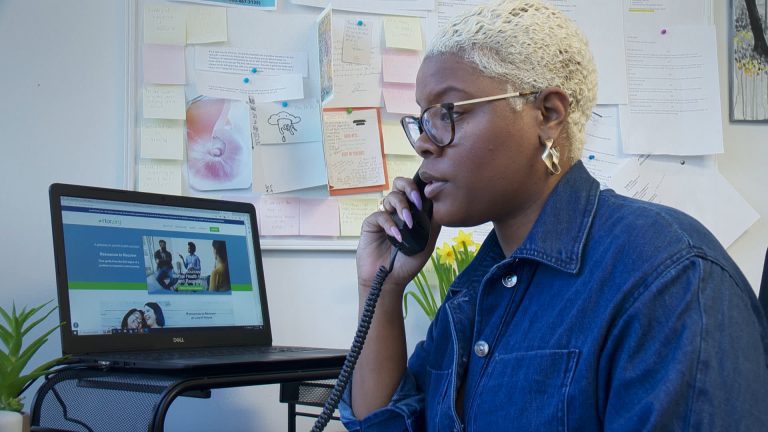Children don’t always have the words to say, “I’m struggling.” Sometimes, their silence says it for them. Behavioral changes such as slamming doors, sleepless nights, or the sudden loss of interest in things they used to love may be more than moodiness or growing pains. They can be warning signs, and ignoring them can have serious consequences.
Mental health isn’t something to put off until later. It needs protecting now. The earlier parents and caregivers recognize when a child is struggling, the better chance they have to prevent deeper pain, self-doubt, or years of unresolved trauma.
Children need a solid foundation to handle life’s challenges without feeling overwhelmed. That foundation isn’t built overnight. It comes from the daily choices of the adults around them —listening instead of dismissing, watching instead of assuming, and stepping in before struggles become unmanageable.
Recognizing Early Warning Signs and Addressing Mental Health Proactively
Mental health conditions often run in families, but that doesn’t mean they are inevitable. Genetics may set the stage, but environment and support shape the outcome. A child with a family history of anxiety or depression is at higher risk, but a home where they feel safe talking about emotions can make all the difference.
Most kids won’t say, “I need help.” They show it in their behavior instead. Some become withdrawn, others lash out, and many pretend nothing is wrong until the weight is more than they can bear.
Disruptions in sleep, appetite, or energy levels often point to something deeper. School performance may slip, or they might start avoiding friends and family. Anxiety and depression don’t always show up as sadness. Sometimes, they show up as anger, restlessness, or feeling overwhelmed by small things.
Kids don’t need parents to fix everything for them. They need parents who listen — without dismissing, minimizing, or rushing to solve the problem. Instead of saying, “You’ll be fine,” try, “I see that this is hard for you. I’m here to help.” That shift alone can change whether children speak up next time or keep their struggles hidden.
Managing External Influences: Media, Internet, and Gaming
Today’s kids live online. Their world exists through screens. Without guidance, that world can become dangerous. While social media can be used for good, many influencers promote unrealistic beauty standards, pressuring young people to conform and act a certain way.
Kids scroll through highlight reels of perfect lives and wonder why theirs doesn’t look the same. They read comments that cut deep and pretend it doesn’t hurt. They absorb content that reinforces fears and insecurities. Without a strong sense of self, it’s easy to believe that what they see online reflects reality.
Parents must talk with their kids about what they consume — not just limit screen time. Ask them what they think of what they see. Challenge them to recognize manipulation in advertising, influencers, or unrealistic portrayals of success. Instead of banning everything, help them build awareness to filter out the harmful messages themselves.
Start by monitoring the media your children consume and block content that isn’t age-appropriate. If you’re unsure whether a movie or show is right for your kid, watch at least the first twenty minutes yourself to make a better-informed choice.
Gaming is another space that needs balance. Some games offer creativity, problem-solving, and social connection. Others become an escape from reality that pulls kids into isolation. Pay attention to what they play, set limits when needed, and encourage other outlets that don’t involve a screen.
The Role of Schools, Teachers, and the Community in Student Welfare
Struggling children often go unnoticed until their grades drop or their behavior changes. However, schools should be more than places for academic success — they should also be safety nets for children who are struggling.
Schools that boost student well-being create a ripple effect in the community. Effective student welfare programs support economic growth by ensuring learners are ready to enter the workforce when they graduate.
Similarly, schools that support well-being produce more civic-minded citizens. Students who feel supported at school make more effective leaders due to their increased confidence and self-assurance.
When schools prioritize mental health, kids know where to turn before things spiral. That takes counselors with time for students, teachers who understand how to spot emotional distress, and programs that create a culture where it’s okay to ask for help.
A mentally healthy school creates ripple effects. Kids bring that support home, communities feel safer, and families are better equipped to handle challenges before they develop into crises.
Encouraging Healthy Outlets for Mental and Emotional Well-Being
Children do not always talk about their feelings but share them in other ways. Some express themselves with their bodies, while others show emotion through art, music, or being in nature. Physical exercise is not only beneficial to the body, but it is one of the best tools employed for managing stress, anxiety, and difficult emotions. It gives them tools to deal with problems words can’t handle.
Spending time outdoors builds more than muscle. It builds confidence, independence, and the capability of problem-solving without panic. Climbing trees, jumping in the water, or just lying on the grass looking up at the clouds can reduce children’s stress and improve their cognitive functioning.
Families don’t have to plan extravagant trips or structured activities to support a child’s mental health. Simple routines such as playing board games, making dinner together, or walking after dinner create stability. Stability creates trust. And trust gives kids the confidence to speak up when they need help.
Creating a Lasting Foundation for Mental Health
Mental health isn’t an afterthought that can be fixed like a favorite broken toy. It’s built over time — shaped by conversations, routines, and the ways kids are taught to handle setbacks, stress, and emotions.
Every child faces challenges. What matters is whether they know how to face them without feeling alone. A child who grows up in a home where emotions aren’t dismissed, where asking for help isn’t seen as a weakness, and where they feel heard, is far more likely to grow into an adult who manages stress in healthy ways.
About the Author: Katie Brenneman is a passionate writer specializing in lifestyle, mental health, education, and fitness-related content. When she isn’t writing, you can find her with her nose buried in a book or hiking with her dog, Charlie. To connect with Katie, you can follow her on Twitter, @KatieBWrites93.
The opinions and views expressed in any guest blog post do not necessarily reflect those of www.rtor.org or its sponsor, Laurel House, Inc. The author and www.rtor.org have no affiliations with any products or services mentioned in the article or linked to therein. Guest Authors may have affiliations to products mentioned or linked to in their author bios.
Recommended for You
- Building a Strong Mental Health Foundation for Your Child - April 23, 2025
- How Supporting Others Can Improve Your Mental Health - April 21, 2025
- Overcoming Addiction: A Therapist’s Journey of Recovery - April 18, 2025







